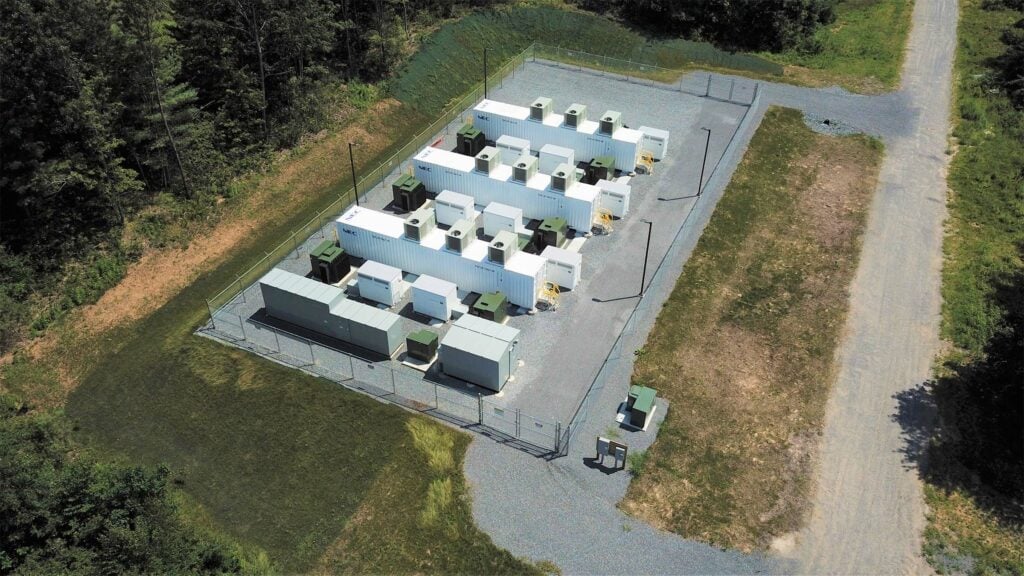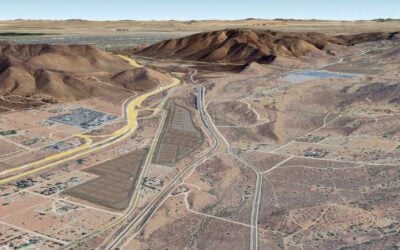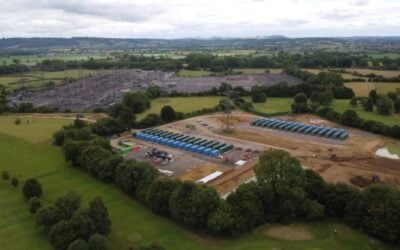
A solicitation for large-scale energy storage could be hosted in about a year’s time as part of the push towards New York achieving its target of deploying 6GW of energy storage on the grid by 2030.
The plan was discussed at the RE+ 2022 clean energy industry conference in Anaheim, California on Monday (19 September) by David Sandbank, a VP for distributed energy resources (DERs) at New York State Energy Research and Development Authority (NYSERDA).
Enjoy 12 months of exclusive analysis
- Regular insight and analysis of the industry’s biggest developments
- In-depth interviews with the industry’s leading figures
- Annual digital subscription to the PV Tech Power journal
- Discounts on Solar Media’s portfolio of events, in-person and virtual
Together with the New York Department of Public Service (DPS), which is New York’s utilities commission, NYSERDA has been tasked by the state’s government with coming up with roadmaps for encouraging the adoption of energy storage.
After Roadmap 1.0, published in 2018, included upfront incentives for both ‘retail’-scale storage systems below 5MWh capacity and larger ‘bulk’ storage. That has so far led to the procurement of some 1.3GW of energy storage that has been awarded and contracted for by utilities in the state, with more than a dozen more gigawatts in NYISO grid interconnection queues.
Roadmap 2.0 is likely to keep the upfront incentives for retail storage but bring in a new scheme for bulk projects, Sandbank said.
New York has an ambitious clean energy and climate crisis mitigation policy programme in place, to reach 70% renewable electricity by 2030 and net zero emissions by 2040. The targeted 6GW of cumulative storage deployments – the highest level set by any state in the US – would support those aims directly.
NYSERDA’s David Sandbank noted that not only does New York need to pursue those aggressive climate and renewables targets, but at the same time and in tandem, there is a “strong movement” toward electrification of buildings, which could double the load on the grid.
Meanwhile as with other regions that have been deploying significant amounts of renewable energy, New York’s peak demand periods for electricity move to later in the day or evening and become longer in duration.
To achieve the goals of the Climate Leadership and Community Protection Act policy, to give it its proper name, Sandbank said New York therefore needs to deploy more renewables, invest in transmission upgrades to enable renewable power to travel across the state from rural areas to more densely populated urban areas and fossil fuel retirements need to happen en masse.
That 6GW of energy storage needs to be in place on the grid before any of those things can happen, because, as NYSERDA has realised “all of those processes become more expensive and less efficient without [energy] storage,” Sandbank said.
NYSERDA and DPS’ roadmaps have the goals of designing crucial market reforms, incentivising private market action and prioritising the elimination of the most polluting of New York’s fossil fuel plants.
New incentive scheme to support bulk energy storage in New York
Sandbank said that mechanisms to encourage bulk energy storage development need to be feasible and ensure effective deployment of resources the grid can call on for the long-term.
A proposed incentive mechanism for bulk storage NYSERDA and DPS have come up with is called the Index Storage Credit. This would see a guaranteed strike price being set by NYSERDA, with project developers taking part in competitive solicitations.
Essentially, NYSERDA and the developer would agree a strike price, based on what NYSERDA models the resource’s stored energy to be worth, and based on what the developer or owner expects its project to be able to earn, on a monthly basis from market participation.
In a monthly period where the system earns less than floor revenues based on the strike price, NYSERDA payments would top up the difference. On the flip side, in a month where revenues exceeded expectations, the project stakeholders would pay the difference back to NYSERDA.
The scheme, Sandbank said, would help developers finance projects by giving them a stable, guaranteed income stream for the lifetime of NYSERDA’s contract, while asset owners would also be allowed to earn revenues from additional participation in wholesale markets.
NYSERDA wants to file Roadmap 2.0 by the end of this year. Then, pending community feedback and public comment periods, the regulatory New York Public Service Commission (PSC) would rule on it. It’s impossible to tell how long that might take, but Sandbank estimated that it could be in about Q2 or Q3 of 2023.
That means in roughly a year from now, a “NYSERDA-driven” bulk energy storage solicitation could be held, Sandbank said.
Speaking at a workshop session hosted by the International Battery Energy Storage Alliance (IBESA) at the California show today, the NYSERDA VP also noted that a need for around 21GW of short-duration, or interday, energy storage by 2050 has been modelled.
However, at some stage as that date nears, perhaps as early as 2030, at least a third of New York’s energy storage will need to be eight-hour duration or longer. However the exact need for long-duration energy storage (LDES) still needs to be assessed based on factors like the cost reduction trajectories of LDES technologies and how the adoption of hydrogen-based emissions reduction technologies progressed, Sandbank said.
New York Governor Kathy Hochul recently announced US$16.6 million of funding for long-duration energy storage projects in the state, with a further US$17 million of funding available for companies to compete for.






